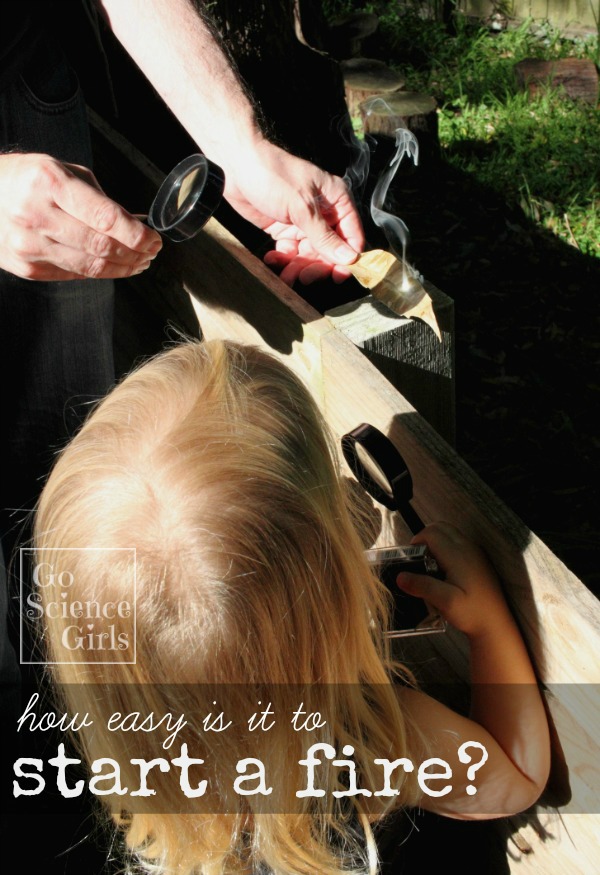
Please note…
Bumble had just turned three when we did this activity. You might think it’s a bit foolhardy to teach your kids how to light fires in the backyard, but I think you need to judge what’s appropriate depending for your kids based on your own situation. Personally I know that if my kids have access to something potentially dangerous, (eg a magnifying glass), then I’d rather they talk about it and investigate the potential dangers with me, than accidentally find out on their own. That way we can agree to reasonable limits together.
The idea for this activity came about after my youngest daughter Bumble watched the movie Ants. A short while later, she started having nightmares about being killed by a ring of fire coming out of the sky, that makes a buzzing noise. It took me a little while to figure out that she was talking about the scene in the movie where a boy uses a magnifying glass to burn ants. The scene is ‘shot’ from the perspective of the ants, so it looks like the beam of fire is coming directly from the sky.
(And this is why I hesitate to let my kids watch feature length movies. Seemingly sweet movies always have a few scary scenes or characters. Why do they do that??? I’ve since found out about a fantastic resource called Common Sense Media, that ranks movies by age appropriateness. It’s awesome.)
My kids are used to things being explained in adult terms, so there was no way that Bumble would accept her fears being dismissed lightly. Instead, we explained that the fire wasn’t coming from the sky, but instead was coming from underneath a magnifying glass. We talked about how it wasn’t very kind of the boy to hurt the ants, and how scary it would be for the ants in that situation. We talked about how we are kind in our family, and we don’t hurt anyone or anything. We talked about how a magnifying glass is shaped in a way that concentrates sunlight into one point.
And then we took Bumble outside to show her how it works. But not on ants.
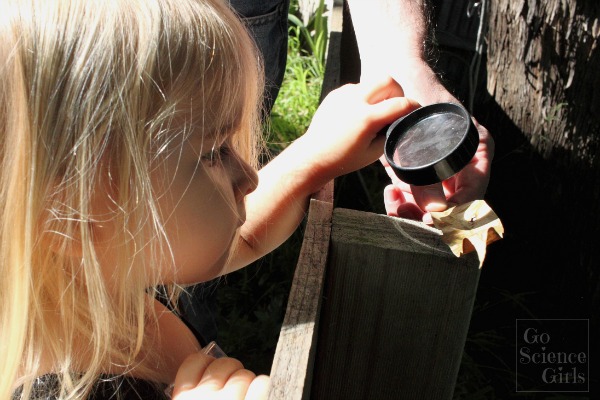
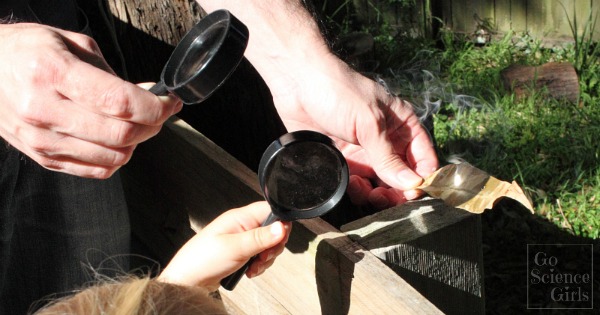
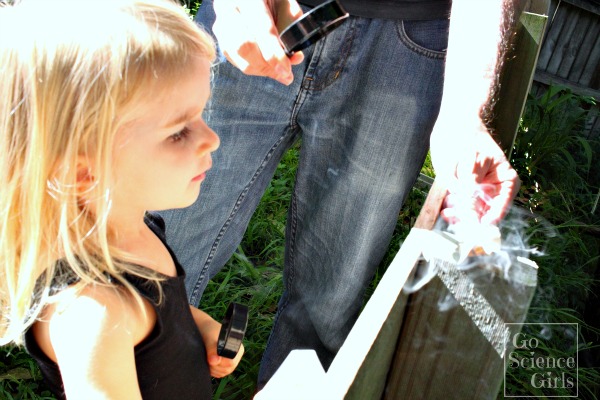
We stopped once our leaves were smoking, but honestly, I was a bit (naively) taken aback at just how easy it was. Yes it was a hot Spring day, and yes we were using dried up gum leaves for our experiment, but it took maybe 1 or 2 seconds for the leaf to start smoking. And this was using cheap $2 shop magnifying glasses. Given the really hot summers and high fire danger in Australia, I’m going to be extra careful from now on to make sure that my kids don’t accidentally leave their magnifying glasses outside.
And, wouldn’t you know it, the ring of fire nightmares have stopped. Sleep well, sweet child.
The Science Behind It
A magnifying glass lens has a convex shape, which bends the sunlight, so that all the sunlight hitting the lens is concentrated into one focal point. If you position a leaf so that it is at the same distance as the focal point, there is enough energy to generate a lot of heat.
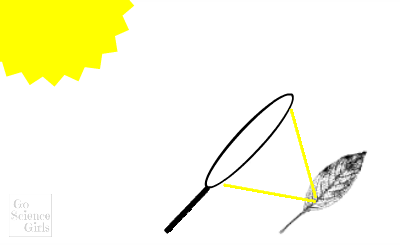

#
#